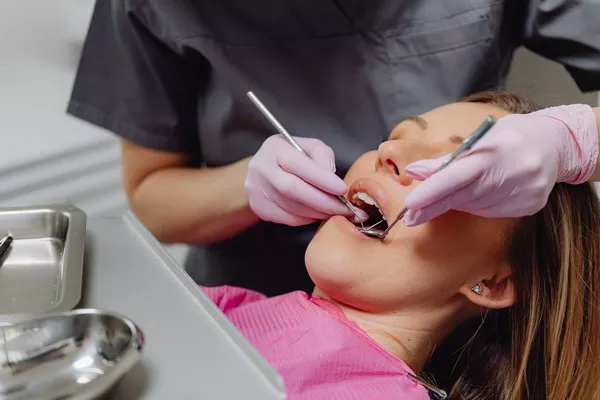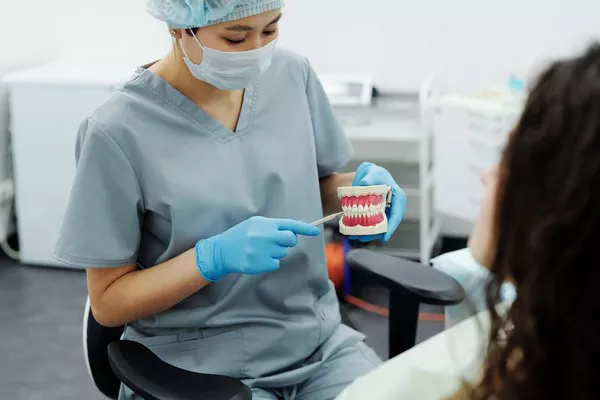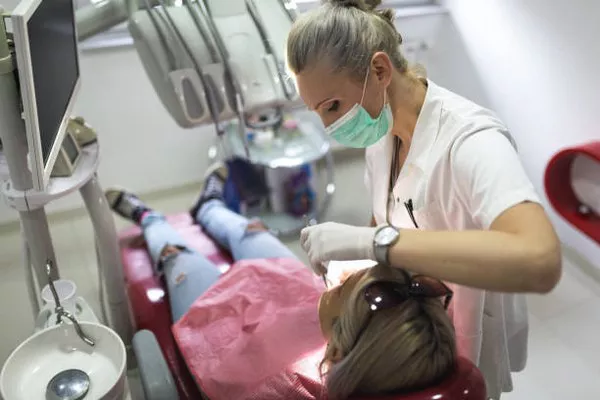Periodontal disease has 2 big risk factors What information the classification exist periodontal disease is one of a high incidence of disease in oral disease, after suffering from diseases can be found that the periodontal tissue in the unusual symptoms, such as gum inflammation, gingival bleeding, the patient to hospital for dental examination to diagnose disease, and patients need to understand the causes of disease, convenient later on disease prevention,
So, what are the causes of periodontal disease?
Common causes of periodontal disease: 1. Local factors (1) Plaque refers to the microbiota adhering to the tooth surface, which cannot be removed by rinsing with mouthwash or water.
It has been recognized that plaque is the initiating factor of periodontal disease and the main pathogenic factor causing periodontal disease.
(2) Calculus is the mineralized plaque deposited on the tooth surface.
Calculus can be divided into supragingival calculus and subgingival calculus according to its deposition location and properties.
Supragingival calculus is located on the tooth surface above the gingival margin and can be seen directly with the naked eye.
More deposits were found on the neck of the teeth, especially on the buccal side of the maxillary molars and the lingual side of the mandibular anterior teeth relative to the opening of the large salivary duct.
The subgingival calculus is located below the gingival margin, on the root surface in the gingival pocket or periodontal pocket, and cannot be directly seen by the naked eye. It must be probed to know the deposition site and amount.
Subgingival calculus may form on any tooth, but is more common on the adjacent and lingual surfaces.
2. Systemic factors Systemic factors are promoting factors in the development of periodontal disease. Systemic factors can reduce or change the resistance of periodontal tissue to external stimuli, make it prone to disease, and promote the development of gingivitis and periodontitis.
Systemic factors include :(1) endocrine disorders, such as sex hormone, adrenal cortical hormone, thyroxine and other secretion abnormalities.
(2) In terms of diet and nutrition, there may be deficiency of vitamin C, deficiency or imbalance of vitamin D, calcium and phosphorus, malnutrition, etc.
(3) The relationship between blood diseases and periodontal tissue is very close, leukemia patients often appear gingival swelling, ulcer, bleeding, etc.
Periodontal disease is a large range of diseases, including many kinds, such as gingivitis, periodontitis, periodontal atrophy, etc., in order to let patients know more clearly the classification of periodontal disease, the following is to introduce the classification of periodontal disease.
1. Gingivitis is mainly an inflammatory lesion confined to gingival tissue, generally not involving deep periodontal tissue.
2, periodontitis in periodontal disease is the most common, the main manifestations are gingival swelling bleeding, periodontal pocket formation, periodontal pocket overflowing, tooth loosening, gingival retreat, periodontal abscess, etc.
The main lesion of periodontitis is the formation of pathological periodontal pocket.
3, periodontal trauma due to excessive occlusal pressure or abnormal direction, beyond the periodontal tissue can bear the load, so that the periodontal support tissue damage a disease.
Development is slow, generally without obvious symptoms, sometimes feel weak chewing, or sometimes have dull or dull pain.
4. Adolescent periodontitis is a chronic degenerative damage of periodontal tissue involving most teeth. It is characterized by the fact that most patients are young and the disease develops rapidly, so that the teeth appear loose, displaced, periodontal pocket formation in the early stage of the disease, and then secondary infection.
The pathogenic factors may be related to heredity.
After finding the existence of periodontal disease, patients must hurry to treat periodontal disease, the following is the treatment of periodontal disease: there are many drugs used to treat periodontal disease, generally have antibacterial therapy acting on pathogenic factors, blocking therapy acting on bone resorption process and traditional Chinese medicine treatment.
Antibiotics can effectively treat periodontal tissue disease, but the problem of the special pathogenic bacteria of periodontal disease has not been solved, so the selection of antibiotics is still in a blind state. In order to prevent the formation of drug-resistant strains, destroy the ecological balance of oral microorganisms, and reduce side effects on the host, the following principles should be followed:
¢Ù The first basic treatment, if the basic treatment is repeated and the effect is not good, can be combined with the use of antibiotics adjuvant therapy.
¢Ú The first choice of antibiotics can be considered for acute infection of periodontal inflammation (such as multiple periodontal abscesses, etc.), but should be stopped immediately after the obvious effect, the long-term use of therapeutic dose of antibiotics is contaboo.
¢Û Try to choose low dose and narrow spectrum antibiotics.
Iodine and oxygen therapy can also be performed locally by placing potassium iodide crystals in a periodontal pocket and injecting a few drops of 3% hydrogen peroxide.
Hydrogen peroxide and potassium iodide together, with the peroxidase in the tissue, precipitation of iodine molecules, new oxygen and potassium hydroxide, can corrode necrotic tissue, and make it with the bubble discharge, at the same time produce a lot of heat energy, promote local blood supply, promote the recovery of inflammatory tissue.
































